Penis Augmentation in Morocco
Search and Compare the Best Clinics and Doctors at the Lowest Prices for Penis Augmentation in Morocco
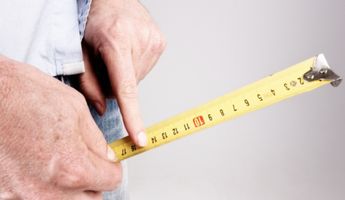
Find the best clinics for Penis Augmentation in Morocco
No clinics available
Egypt offers the best prices Worldwide
Price: $ 500

- Home
- Morocco
Compare Before & After Photos of _procedure_photos.phpPenis Augmentation
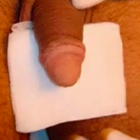
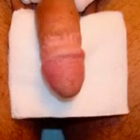
Front view
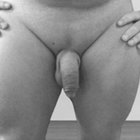
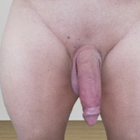
Front view
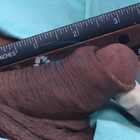
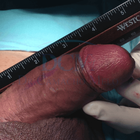
Half-side view
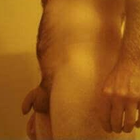
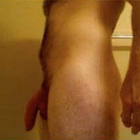
Full-side view
WHY US?
At Medijump, we're making medical easy. You can search, compare, discuss, and book your medical all in one place. We open the door to the best medical providers worldwide, saving you time and energy along the way, and it's all for FREE, no hidden fees, and no price markups guaranteed. So what are you waiting for?

Free

Best Price

Widest Selection

Risk-Free
What you need to know about Penis Augmentation in Morocco

Also known as a Penis Enlargement, Penis Enhancement, Phalloplasty or the Penoplasty and involves any technique aimed to increase the size of the penis, where some procedures aim to increase total length, others may increase the shaft's girth. The Penile Implant is an alternative technique that is more common among those with erectile dysfunction. The procedure is performed under general anesthetic and can be completed in 45-60 minutes.
The most common procedure involves lengthening the flaccid penis by releasing the muscle at the Mons Pubis, but there is also the option for a fat transfer, which combined with liposuction, is particularly useful for increasing the girth. Note that these procedures aide in increasing the length of the flaccid penis only, the erect length remains the same.
To increase the length of the erect penis, a form of penile disassembly is required, where the head is detached and the extra tissue is grafted into the shaft - this technique takes longer and is more expensive. All techniques require two nights of hospitalization and a recovery time of 10-14 days in Morocco.
What is the cost of Penis Augmentation in Morocco?
The expense related to the Penis Augmentation in Morocco can differ based on many factors. These encompass the particular details of the operation, the competency of the medical professional, and the amenities provided by the selected healthcare center.
Although being mindful about cost is logical, it's vital not to sacrifice the standard of treatment. A credible healthcare institution will be clear about the expenses, offering you an itemized elucidation. Additionally, it's beneficial to explore if your medical insurance provides any coverage for the operation or related care.
What does a Penis Augmentation Procedure Involve?
Before proceeding with the surgery, you will have an extensive consultation with your surgeon to determine whether the procedure is suitable for you. You will discuss your expectations and it is important to be realistic to avoid disappointment. You should also inform your surgeon about the reasons why you want to undergo the surgery. Your surgeon will get you to do a physical examination to find out if you have any medical conditions and to help your surgeon evaluate the best treatment option for your specific case.
During the surgery you will be given general anesthesia, meaning you will be asleep and will not feel anything. The most common types of penis augmentation surgery are:
- Penis girth surgery is aimed to increase the thickness of your penis in a flaccid and erect state. Your surgeon will perform a small liposuction procedure to harvest fat from the abdomen, thigh, or buttock. The fat is then purified with a system to improve the quality of the fat. The last step is distributing the fat along the shaft of the penis to thicken it. Some studies claim an increase in girth of around 1.4 cm to 4 cm.
- Penis length surgery can give the flaccid penis an average of 2 cm, but it cannot change the size of the erect penis. During the surgery, your surgeon will cut the ligament where the penis is attached to the pubic bone. Then, your surgeon will perform a skin graft at the base of the penis to allow for extra length.
-
Liposuction is a surgical procedure to remove fat from below the abdomen which can reveal up to 2 cm of the penis that had previously been buried. By removing excess fat around the pubic area, a partly buried penis can appear more prominent. This procedure works well with men who have a large tummy. However, if the man puts on weight again, the fat will return to the pubic area and may bury the penis again.
-
Penuma is a device inserted under your penis skin to make it longer and wider. It is crescent-shaped and made of medical-grade silicone. It comes in three sizes: large, extra-large, and extra-extra-large. It will be designed to fit your penis shape. Your surgeon will make an incision in your groin area just above the base of your penis to insert the Penuma. The device will stretch the penis skin and tissues to make your penis look and feel larger. If you are not already circumcised, you will need to do it before the procedure.
How Long Should I Stay in Morocco for a Penis Augmentation Procedure?
In general, it takes around 45 minutes to an hour to complete a penis augmentation. You may go back to your hotel on the same day of the surgery after the effects of the anesthesia wears off. However, there are some cases where the patient will require a two nights stay at the hospital.
Plan to stay in Morocco for at least 10 to 14 days. During your stay, it will allow for the initial recovery and you will attend follow-up checkups.
What's the Recovery Time for Penis Augmentation Procedures in Morocco?
You will need to take some time off work after this surgery, normally one week if your job does not involve any physically demanding activity. If your job involves a lot of moving around, you can go back within 2 weeks.
Avoid any strenuous activity, including exercise for around six weeks. Do not have any sexual intercourse or masturbation for around four weeks. It may take around three to six months before you will see the completed result.
What sort of Aftercare is Required for Penis Augmentation Procedures in Morocco?
Your surgeon will give you a set of instructions about post-operative care and you will need to follow the instructions. Pain and soreness following the surgery are normal and your surgeon will give you painkillers to control the pain. A surgical dressing will cover your penis, which will need changing at intervals.
You will need to keep the area clean, but avoid getting water on the area. Use a flannel or a sponge to clean the area. Your surgeon may ask you to massage your penis on a daily basis to prevent lumps from forming on the surface and to stop it from becoming lop-sided. Avoid heavy lifting and other strenuous activity and wait for a month before you resume any sexual activities.
What's the Success Rate of Penis Augmentation Procedures in Morocco?
The success rate is high and the procedure can give the patient a significant confidence boost. Patients often cite the improvement of premature ejaculation (sexual stamina) and increased libido. Feeling and sensitivity are not affected and the patient is still able to ejaculate as normal, therefore the chances of conceiving are not impacted. A study found that 81% of patients who had Penuma rated their results high or very high.
For an animated display of how the penis augmentation procedure works with before and after images, watch this short video.
Are there Alternatives to Penis Augmentation Procedures in Morocco?
The penile implant is an alternative technique, but it is more common among those with erectile dysfunction. Non-surgical alternatives to this surgery are pills, lotions, vacuum devices, penile extenders, and jelqing (stretching techniques). However, no study confirms the success of those procedures.
What Should You Expect Before and After the Procedure
Familiarizing yourself with the anticipation of the Penis Augmentation can substantially decrease stress and better equip you physically and emotionally. Before the process, you'll undertake an in-depth conversation with your medical expert, discussing the procedure, potential hazards, and projected results. They will mentor you on the essential preparatory steps, which might encompass advice on nutrition and lifestyle patterns. It's crucial to abide by these guidelines to set the best possible environment for a triumphant procedure and speedy recovery.
After the Penis Augmentation, it's ordinary to feel some level of discomfort, inflammation, or bruises, which are expected after-surgery responses and part of the natural recovery course. Your medicinal specialist will hand over comprehensive after-surgery care instructions, including medicines timings, relaxation, proper diet, and sleep positions. Complying entirely with these instructions can encourage a speedy recovery and lessen possible complications.
What are Potential Risks of Penis Augmentation?
Nonetheless, there are still risks and complications that you will need to be aware of.
- For penis length surgery, the cut ligament may not provide the support it originally did, which could lead to less satisfactory erections. In addition, it can also cause pain during sex.
- For girth surgery, some patients may experience scarring, disfigurement, infection, and lumpiness.
- Other complications include implant coming apart, and blood cloth.
Whilst the information presented here has been accurately sourced and verified by a medical professional for its accuracy, it is still advised to consult with your doctor before pursuing a medical treatment at one of the listed medical providers
No Time?
Tell us what you're looking for and we'll reachout to the top clinics all at once
Enquire Now

Popular Procedures in Morocco
Prices Start From $95

Prices Start From $556

Prices Start From $1,795

Prices Start From $1,000

Prices Start From $322

Prices Start From $275

Recommended Medical Centers in Morocco for procedures similar to Penis Augmentation

- Interpreter services
- Translation service
- Religious facilities
- Medical records transfer
- Medical travel insurance
- Health insurance coordination
- TV in the room
- Safe in the room
- Phone in the room
- Private rooms for patients available

- Interpreter services
- Translation service
- Religious facilities
- Medical records transfer
- Medical travel insurance
- Health insurance coordination
- TV in the room
- Safe in the room
- Phone in the room
- Private rooms for patients available

- Interpreter services
- Translation service
- Religious facilities
- Medical records transfer
- Medical travel insurance
- Health insurance coordination
- TV in the room
- Safe in the room
- Phone in the room
- Private rooms for patients available

- Interpreter services
- Translation service
- Religious facilities
- Medical records transfer
- Medical travel insurance
- Health insurance coordination
- TV in the room
- Safe in the room
- Phone in the room
- Private rooms for patients available

- Interpreter services
- Translation service
- Religious facilities
- Medical records transfer
- Medical travel insurance
- Health insurance coordination
- TV in the room
- Safe in the room
- Phone in the room
- Private rooms for patients available
Penis Augmentation in and around Morocco
About Morocco
Morocco is a popular destination, attracting culture lovers, backpackers, adventure travelers, couples, families, foodies, and more to its four imperial cities: Marrakesh, Fes, Meknes, and Rabat. Rabat is the current capital city. Although a modern city at first glance, it has several interesting historical attractions, such as the Kasbah of the Oudaias, the old medina, and the Hassan Tower. The gleaming Royal Mausoleum is also well worth a visit. Known as the Red City, Marrakesh is famous for its old medina, numerous souks, ancient palaces like Badi Palace and Bahia Palace, the striking Koutoubia Mosque, the energetic Djemaa el-Fna, and the Saadian Tombs. The former capital of Fes boasts plenty of stunning architecture, though it is perhaps most known for its large tanneries and for being home to one of the oldest universities in the world. Meknes has one of the most impressive monumental gates in all of Morocco, Bab el-Mansour. Horse-drawn carriages are a great way to explore the charming and relaxed imperial city. Morocco has beaches along both the Mediterranean Sea and the Atlantic Ocean. Popular holiday spots with foreign visitors include Tangier and Agadir, while Asilah attracts mainly locals and Spanish visitors. The vast Sahara Desert is the world’s largest hot desert. There are several places in Morocco from where you can begin expeditions into the desert, and there are plenty of experienced operators offering trips to remember.
The country welcomes an ever-increasing number of medical tourists each year, many of which travel for Penis Augmentation procedures. Medical Tourists travel from all across the globe, particularly from neighboring African countries with an inferior healthcare system. Casablanca and Marrakesh are the popular cities and they mostly cater to dentistry and plastic surgery requirements
Popular Parts of Morocco
Morocco, with a population of over 35 million people, is known to be magical and chaotic. The country is very diverse, from Saharan Dunes, High Atlas, ancient medinas, friendly locals to traditional life; Morocco has everything for every tourist.
- Marrakesh is also known as the red city because of its famous red walls, plazas, and alleys. It has a beautiful medina (old town) where tourists can wander around, be amazed by the historical city, and explore and shop in the souks. Visit Djamaa el-Fina and find street performers, musicians, and tattoo artists.
- Fez is considered as Morocco’s cultural and spiritual center. The city is filled with museums, mosques, palaces, and fountains. The most popular attraction is the medina, tourists can explore the tiny streets and find an array of street vendors. Remember to try the amazing local cuisine and stay away from wandering down empty streets.
- Tangier is located in northwestern Morocco on the Maghreb coast. It offers a breathtaking waterfront where you can see the Mediterranean Sea meets the Atlantic Ocean. The city is known to be Europe’s gateway to Africa. It has a fascinating cultural landscape as well as an inviting literary and artistic past.
- Casablanca is the biggest city and the least popular tourist’ destination in Morocco. But the city is actually full of hidden gems. From Art Deco architecture, beaches, markets, to history and culture, tourists will find many amazing things to see here.
- Rabat is often overlooked by tourists. It is the political and administrative capital of Morocco that offers plenty of charm. Tourists are free to roam around the Tower of Hassan, enjoy a day at the calm beach, or admire the big medina.
Weather and Climate in Morocco
Morocco’s climate is generally moderate and subtropical with cool breezes from the Atlantic and the Mediterranean Sea. Temperature varies greatly depending on region and altitude. Summer lasts from June to August and is often really hot. Winter comes in November and ends in January. It is the wettest and coldest season in the country. The best time to visit is in Spring and Autumn where the weather is warm and pleasant.
The coastal regions have nice weather throughout the year, the Winter has mild temperature and although the temperature will rise in the Summer, it’s not too hot. The High Atlas Mountains can be visited all year round but the winter can get really cold. There will be snow on the peaks during Winter. The summer can be a little too hot for any long-distance hike.
Getting Around in Morocco
Morocco’s main gateway is Casablanca's Mohammed V International Airport. The airport is located in Nouaceur Province and is the busiest airport in the country. It is the hub for Air Arabia Maroc, Royal Air Maroc. It serves domestic and international flights to and from many cities in the Middle East, Europe, and America. Major and budget airlines operate flights from this airport. Other important airports include Menara airport in Marrakesh, Fes–Saïss in Fez, Ibn Batouta International in Tangier.
There are several options for tourists to travel to downtown Casablanca. Buses are affordable, a single ticket costs 20.00 MAD. It will take around 45 minutes to get to the city center. There’s also a bus line that will take tourists to Rabat.
Casablanca Airport has an underground train station that connects to Mers Sultan, Casa Port, Casa-Voyageurs or L’Oasis. The total trip time to downtown Casablanca is 45 minutes. The trains operate from 06.00 am to 10.00 pm.
Taxis are the most convenient mean of transportation, but they’re also more expensive than trains and buses. The base fare is around 250.00 MAD to 300.00 MAD (25 to 30 USD). Always avoid non-authorized taxis because they are known to overcharge. Refuse to board a taxi with broken or turned off meters. Remember that Casablanca official taxis are painted in white.
The most efficient and affordable way to get around Morocco is by the intercity buses. The most popular operators are Supratours, CTM, SATAS, and Ghazala. A ride from Marrakesh to Casablanca is around 4 hours and should cost 90 MAD (9 USD).
Morocco’s national rail network is operated by ONCF and connects major cities like Marrakesh, Casablanca, Fez, and Rabat. The trains are usually on-time and comfortable. First-class tickets cost about 45 MAD (5 USD) per hour and the second class tickets cost around 30 MAD (3 USD).
Tourist Visas in Morocco
Citizens of Australia, New Zealand, Canada, the United States, the European Union, Britain, Japan, and South Africa do not need a visa to enter the country. Citizens of 66 countries can enter and stay in Morocco for up to 90 days. Citizens of the Republic of the Congo, Guinea, and Mali do not require a visa but must obtain an Electronic Travel Authorization in advance.
It is recommended to check the current regulations with the Moroccan Embassy or Consulate in your country. All visitors must hold a passport valid for over 6 months at the entry date.
Additional Information
- Local Currency: The official currency if Moroccan Dirham (MAD). The exchange rate from 1 USD is 9.70 MAD.
- Money & Payments: Tourists can find many ATMs spread around the country and they are the easiest way to access money. Credit cards are accepted in top-end hotels and restaurants. Always carry some cash with you. Many Moroccan riads will accept euros. Tipping can sometimes be mandatory. It is not necessary to tip taxi drivers, but it is polite to do so.
- Local Language: There are two official languages in Morocco; Modern Standard Arabic and Amazigh (Berber). French is widely understood and spoken in the country. Many people in the northern and southern parts of the country can speak Spanish. English is not widely spoken but some people in tourist and urban areas can speak English. Most street signs are written in Arabic and French.
- Local Culture and Religion: The majority of Morocco’s population follows Islam. Christianity, Judaism, and Baha’i Faith are freely practiced. The country has a conservative dress code. Avoid wearing revealing clothes regardless of the season.
- Public Holidays: Islam religious holidays are celebrated in Morocco. The country hosts several annual festivals such as Marathon des Sables, Kelaa-des-Mgouna Rose Festival, and Marrakesh Popular Arts Festival.
Popular Searches
- Plastic Surgery in Thailand
- Dental Implants in Thailand
- Hair Transplant in Thailand
- Breast Augmentation Thailand
- Gastric Sleeve in Thailand
- Gender Reassignment Surgery in Thailand
- Laser Hair Removal in Bangkok
- Botox in Bangkok
- Dermatology in Bangkok
- Breast Augmentation in Bangkok
- Coolsculpting in Bangkok
- Veneers in Turkey
- Hair Transplant in Turkey
- Rhinoplasty in Turkey
- Stem Cell Therapy in Mexico
- Rhinoplasty in Mexico
- Liposuction in Mexico
- Coolsculpting in Tijuana
- Rhinoplasty in Korea
- Scar Removal in Korea
- Gastric Sleeve in Turkey
- Bone Marrow Transplant in India
- Invisalign in Malaysia
- Plastic Surgery in the Dominican Republic
- Tummy Tuck in the Dominican Republic
- Plastic and Cosmetic Surgery in Poland
- Rhinoplasty in Poland
- Hair Implant in Poland
- Dental Implants in Poland
- IVF in Turkey